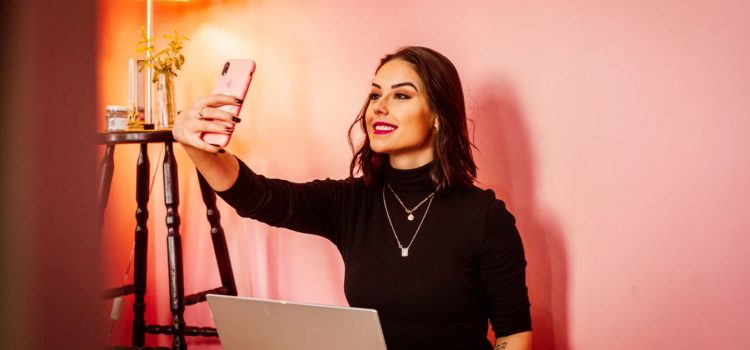

This article gives you a glimpse of what you can learn with Shortform. Shortform has the world’s best guides to 1000+ nonfiction books, plus other resources to help you accelerate your learning.
Want to learn faster and get smarter? Sign up for a free trial here .
Do you use social media filters? Did you know that these filters can actually do more harm than good?
Almost every social media platform has a filter, whether it be Instagram, Snapchat, or TikTok. While they can be fun, they can also promote an unhealthy and narrowing idea of what beauty should look like.
To understand the controversy behind filters on social media, we’ll look at the history of selfie culture and how the Kardashians have made filters acceptable on social media. Then we’ll delve into the damaging effects of these unattainable beauty standards.
How Did Social Media Filters Become Popular?
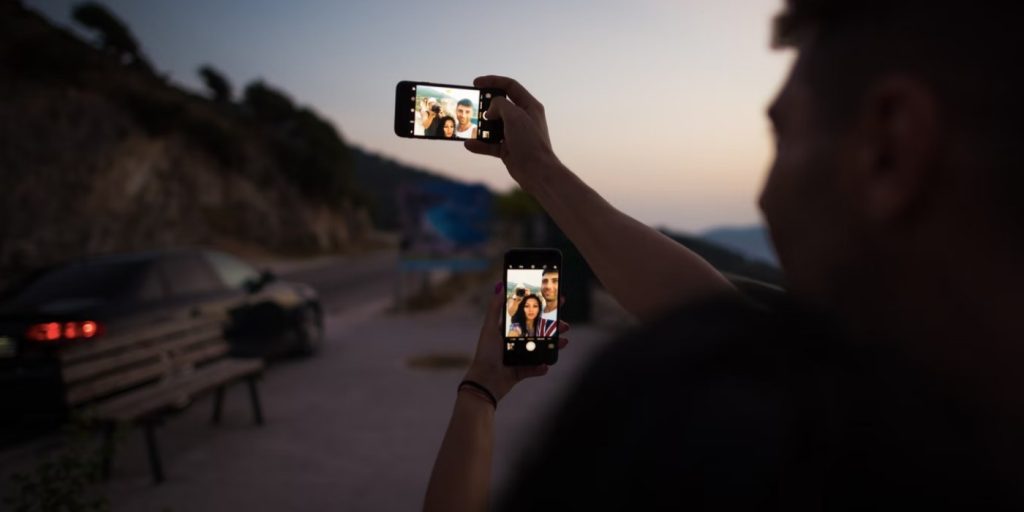
Where did social media filters originate from? The answer: selfies. Filters weren’t invented alongside the selfie, but the selfie is a major contributor to the rise of beautifying yourself for a photo.
Selfie culture started in the late 1990s, but it became popular once MySpace and Facebook were invented. From there on, social media filters became mainstream, thanks to two social media platforms specifically designed for sharing photos: Snapchat and Instagram.
The Rise of Selfie Culture
Selfies have been around a lot longer than most people realize. Photographer Robert Cornelius took a picture of himself in 1839, and more than a century later Andy Warhol experimented with self-taken portraits. But developing these photos was a long process, which was neither convenient nor cheap. However, the digital selfie was both of those things.
The concept of a digital selfie was popularized after 1999 when Japanese electronics manufacturer Kyocera released the first phone with a front-facing camera: the Kyocera Visual Phone VP-210. From then on, more phones were made with built-in cameras, which people took advantage of. Once social media platforms began to populate, people used their smartphones to upload pictures of themselves on social media as a form of expression.
In the early 2000s, MySpace had an era of self-taken portraits. The pose became so popular and formulaic that it’s now even dubbed the “MySpace selfie,” which typically involves a high-angle shot of the user with the flash on. Another pose includes a shot in front of a bathroom mirror—with the flash on, of course.
When Facebook became more popular than MySpace (between 2006 and 2009), the concept of the “MySpace selfie” had a stigma of being cheap, amateur, and lonely. There was an elitist appeal to Facebook—the idea of posting a picture of yourself taken by another person gave the impression that you had friends and attended social gatherings. Yet, selfies made a comeback when the iPhone 4 was released, allowing selfies to look as crisp as posed portraits taken from far away.
The Rise of Social Media Filters
Before the invention of the first phone with a front-facing camera in 1999, filters were already established in Japanese “kawaii” culture. These filters were found in Japanese photo booths, known as purikura booths, that obsessed over “girly” cuteness. The kawaii culture made a comeback in Western culture in the early 2010s on the social media site Tumblr.
The launch of Snapchat in 2011 marked the beginning of social media filters. Selfies were used to send messages between users, and by 2015, the filters (known as “Lenses”) were seen as a fun trend to hop on. Most notably, there was the dog ears filter, a flower crown filter, and a face swap filter. Selfies became so popular that Oxford Dictionaries selected “selfie” as the word of the year in 2013.
Instagram also encouraged users to take selfies with its filters. In its earliest years, these filters were typical color overlays such as Clarendon, Gingham, and Sierra. These filters often had “beauty-enhancing” features that people used to virtually magnify or change someone’s face.
Today, the MIT Technology Review claims that Snapchat has over 200 million users who use their Lenses to augment themselves and the world around them, and Instagram has over 53 million photos with the #selfie tag on its site. While anyone can take selfies, apply a filter, and upload them to Snapchat or Instagram, the rising trend of filtering yourself on social media can most definitely be linked to celebrities who have made their fortune on their beauty.
How the Kardashians Normalized Social Media Filters
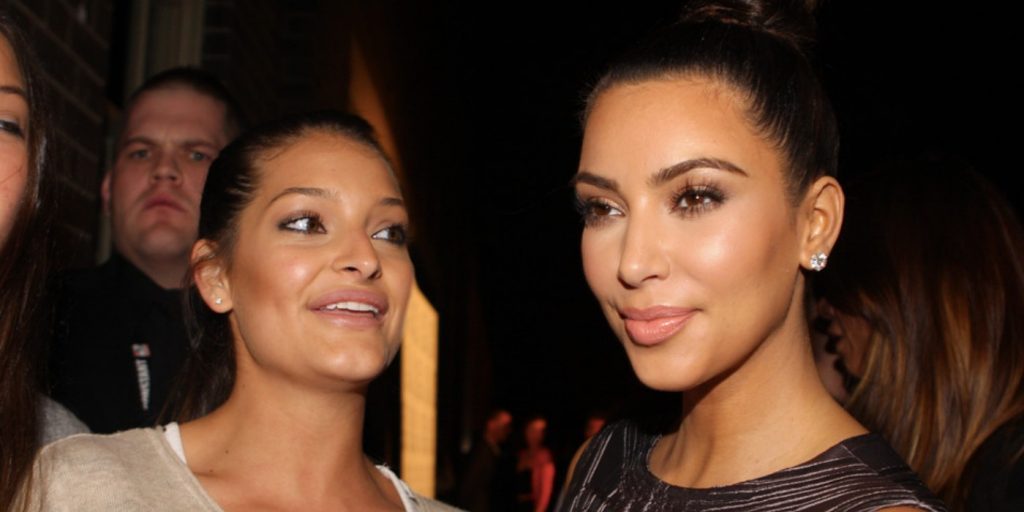
Since the Kardashian-Jenner family became known for being “famous for being famous,” the sisters have made their place as the queens of Instagram. As of June 2022, three of the Kardashian-Jenner sisters are among the top 10 followed accounts on Instagram:
- #3 – Kylie Jenner – 353 million followers
- #7 – Kim Kardashian – 320 million followers
- #10 – Khloé Kardashian – 257 million followers
In addition, Kendall Jenner and Kourtney Kardashian sit at #11 and #19, respectively.
The Kardashians have such a large presence on Instagram that their specific physical aesthetic has been dubbed the “Instagram face” by The New Yorker’s Jia Tolentino. The face is sculptured by the art of social media filters and face tuning—a white, but with ambiguous ethnic features, face with high cheekbones, plump lips, and poreless skin. The Instagram face resembles cartoon characters who were drawn to be objectified for their sexual features, and the Kardashians are being awarded for promoting it as the desired look to have.
Some filters on social media have attempted to replicate the Instagram face that the Kardashians are known for. TikTok’s “skinny filter,” for example, contours the face to appear thinner. If someone wants to replicate the Kardashians’ curvy body types (which are often accused of being the results of plastic surgery) that are flaunted on Instagram, they can easily download apps such as SkinneePix or Body Tune that reshape the user’s waist and other parts of the body digitally.
The problem with these apps and filters is that they’re easily accessible, and they set unrealistic goals for their fanbase. The Kardashians’ own children are even victims of their desire to become perfect caricatures on Instagram.
The family’s influence on body image is as strong as ever, especially as the Kardashians promote their unhealthy body shaming as “body positivity.” The sisters, Khloé and Kim, are the worst perpetrators.
Khloé Kardashian’s Unedited Bikini Picture
In 2021, an unedited photo of Khloé Kardashian with no make-up in a bikini sparked many people’s interest. The picture was uploaded to social media without her consent, and the Kardashian legal team went to extravagant efforts to remove the photo from the Internet entirely.
The controversy that arose from Khloé removing the image wasn’t from the fact that she felt insecure about the picture, but because of the efforts she went through to take it down. The message Khloé sends across is that she’s ashamed of her natural body.
This is an insecurity that many people have, especially on social media. But her reluctance to only show filtered photos on Instagram perpetuates the idea that filters are the only way for a person to feel secure about themself. Instagram is also taking advantage of these insecurities by releasing face-altering filters (many of which are banned now) that plump lips, slim faces, and add make-up. Even Khloé herself has used these filters on Instagram.
Despite many fans showing love for Khloé’s natural look, Khloé posted a four-page statement explaining how she’s always been under scrutiny for not living up to the public’s beauty standards. She goes on to say how she’s always been known as the “fat sister” or the “ugly sister” of the family, and she’s worked hard to subvert those stereotypes. But her journey of weight loss and acceptance has not always been body positive.
We may never know if Khloé Kardashian has had plastic surgery to attain the body she shows off on Instagram, but this photo is evidence that she uses filters and photoshop to look like an entirely different person online. There’s even a running joke on social media that Khloé has a “different face” every week because of the heavy photoshop on her nose, cheekbones, and lips each week. Nothing about Khloé digitally changing her body reflects her Good American body positivity campaign, which is supposed to embrace all bodies of different shapes and sizes.
Khloé’s public journey of loving her body is merely just “perfecting” herself through social media filters. Rebekka Arnold, a self-proclaimed Kardashian fan, told HuffPost that she wished Khloé would’ve used the unedited photo to show her acceptance and love for her natural beauty. Instead, Khloé’s horrified reaction just speaks of how much she disapproves of textured skin and a look without makeup.
Kim Kardashian Photoshopping Her Children
Another Kardashian who has gotten into trouble with social media filters is Kim, who has been more open about photoshopping and filtering her Instagram feed. Yet, she still doesn’t seem to understand the harm it causes.
Among many of Kim Kardashian’s controversies on social media have been darkening her skin (which many people have referred to as a form of blackface) and promoting dangerous weight-loss lollipops. More recently, Kim has been photoshopping her children so they can achieve her digital aesthetic.
While Kim has never confirmed such, she was first accused of altering North West’s (her oldest daughter) “imperfections,” which included her unibrow, kinky hair, and the gap between her teeth at just 18 months old in Instagram pictures. Years later, Kim confirmed she photoshopped North into her annual Christmas card because North was having a fit the day of the photoshoot. It seems harmless enough to photoshop North from one photoshoot into another for this reason, but her next controversy is a little odd.
In April of 2022, Kim admitted to photoshopping her niece True’s face onto the body of her niece Stormi because the original photo “ruined her aesthetic.” According to some Eagle-eyed Reddit users, Kim also darkened Stormi’s hand with a filter to make her match True’s skin color. It’s incredibly harmful to encourage the use of altering children’s skin color for an aesthetic, especially when there’s an issue of many biracial children not feeling a sense of belonging in one race or another. It goes to show how much the Kardashians rely on photoshop to get the best post for Instagram. Kim has even gone as far as to photoshop children so they won’t ruin her pink aesthetic, and it’s so normalized to the point where people laugh the incident off.
The Impact of Filters on Young Girls
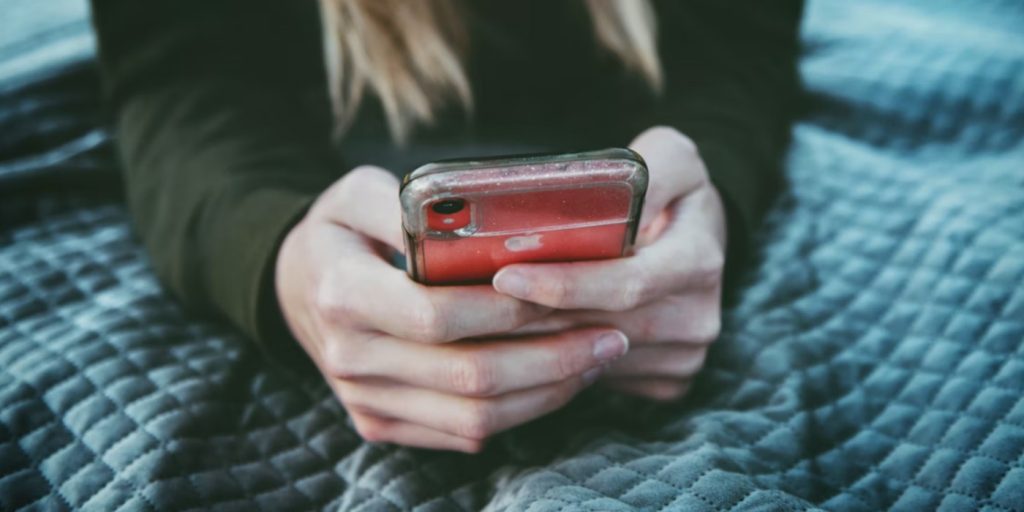
With so many social media platforms to choose from and the growing popularity of “influencers” on YouTube, TikTok, and Instagram, even children are making their way to social media. For younger girls who have yet to develop a sense of identity, this is a gateway to destructive ideas about their bodies. Without adult supervision, impressionable children are privy to developing these ideas that will have a lasting effect on them.
Below, we’ll look at two factors in the social media filter debate that are affecting how young girls perceive themselves: weight loss and dieting posts, and racially under-toned filters. We’ll also dive into the result of these posts and filters: cosmetic surgery.
The Harm of Weight Loss and Dieting Posts
Children on Instagram, TikTok, or Snapchat might not understand the content that is given to them through an algorithm. Young girls often find a lot of content based on body image on their feed, and with each weight loss or dieting post they click on, more will pop up on their feed. It’s the basis of how a social media algorithm works.
Even if it’s not something they’re interested in, sometimes they just can’t help but click on it to see what it’s about. But one click is all it takes to receive numerous weight-loss messages. It’s natural to be curious, but absorbing too many of these posts about a false body image can warp young girls’ understanding of what a body is supposed to look like.
As said above, Kim and Khloé Kardashian have advertised detox lollipops, Flat Tummy “cleansing” shakes, and vitamin supplements. The shakes and “detox” teas especially promote a toxic diet culture, as they contain laxatives that can damage your internal organs. With the massive influence these women have, it’s especially dangerous to spread the wrong message that these items are easy “miracle” supplements that guarantee weight loss. In reality, all these advertisements do is create a distorted and negative body image and encourage harmful dieting habits.
Some Filters Are Racially Biased
One conversation about social media filters is the whitewashing features they exhibit. Take, for example, Snapchat’s flower crown filter:
- The beauty filter is intended to define Eurocentric features that aren’t commonly associated with people of color. The filter brightens skin tones, contours the face to appear thinner, sparkles eyes if they’re blue or green, and gives the user rosy cheeks.
Snapchat has gone a little out of style since then, but the video-sharing platform TikTok has its own filters with racist undertones, such as the “Glow Look:”
- The “Glow Look” alters the face, almost identically to Snapchat’s flower crown filter. Eyebrows are filled in, eyelashes are extended, eye and lip makeup is added, and your eye color changes to a greenish-blue color.
The “Glow Look” did some damage on TikTok, with many people exclaiming in comment sections that it only works on white people and conforms to European beauty standards by erasing features of people of color (POC).
The idea these whitewashing filters exhibit is that POC features aren’t “pretty enough.” Skin lightening shouldn’t be the ideal way to accept your body and features, but it’s masked as a “fun” filter to play around with on social media. People of color want to see more representation in media and entertainment, but they don’t even look like themselves when putting on a filter that changes their features. With young people on social media, this rejects a wider beauty standard that includes POC. This erasure de-normalizes diversity and is especially harmful to young POC who are still developing their sense of identity in a world that promotes Eurocentric ideals.
A Growing Desire to Receive Plastic Surgery
In an article explaining the damage of social media filters, Teen Vogue says that these “perfectionist beauty filters” are causing teens ages 13 to 21 to seek cosmetic surgery and alter their skin color.
In some ways, the process of airbrushing and editing one’s face and body is a form of plastic surgery—you can make your nose smaller, give yourself a slimmer waist, and define your jawline. But that’s only digital. Eventually, when these children come to age, many start to seek out professionals to permanently alter their bodies to look like their online personas.
Dr. Melissa Doft, a double board-certified plastic surgeon in Manhattan, told Forbes that her younger female clients have specific requests that often align with the “Instagram face,” which requires rhinoplasty, blepharoplasty, chin augmentation, submental liposuction, and facelift surgery. It’s a very narrow standard that worries Dr. Doft, who believes this only encourages a lack of diversity in beauty. In addition, the combination of all of these desired features isn’t impossible to obtain through surgery, but it’s certainly harder for the surgeon to meet these high expectations.
How Social Media Filters Impact Your Mental Health
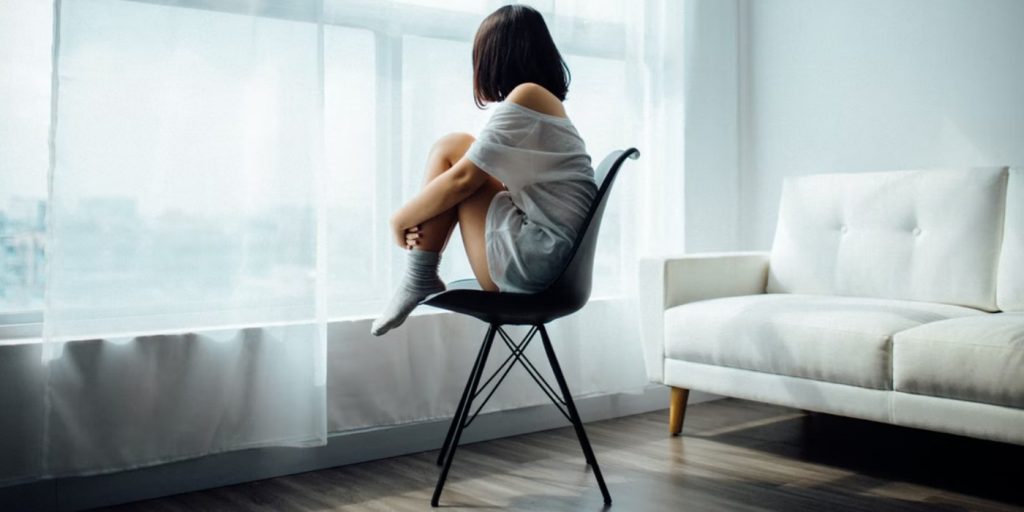
We’ve now seen how filters can cause young girls to feel insecure about their image and identity. Unfortunately, these insecurities can cause so much damage that it leads to mental health problems. Some of the most detrimental issues young girls can face are body dysmorphia, depression, and anxiety. Let’s discuss how these issues develop through social media filters, and the symptoms you should look out for in you or a loved one.
Body Dysmorphia
The obsession between what one looks like in reality and what one looks like in social media filters can lead to body dysmorphic disorder (BDD). This mental health problem can interrupt everyday life as one becomes fixated on a minor flaw or even an imagined flaw. BDD affects about 1 in 50 people, and symptoms usually begin during adolescence around 12-13 years old, according to the Mental Health America’s website.
A form of body dysmorphia that’s risen from this phenomenon is “Snapchat dysmorphia,” which British cosmetic doctor Tijion Esho coined in 2018. It’s the obsession that directly stems from using social media filters to “fix” these flaws. Neelam Vashi, an assistant professor of dermatology at the Boston University of Medicine told The Washington Post that the people living with “Snapchat dysmorphia” live in a “fantasy world,” where the problems they obsess over can’t be fixed in the real world.
Depression and Anxiety
Continuing the conversation about mental illnesses from social media usage, depression and anxiety can also become an issue, especially if someone begins to show symptoms of body dysmorphia. As stated before, if someone isn’t happy with how they look in real life, this can lead to isolation and depression because they would rather spend more time in their “fantasy world” on social media, cutting themselves off from the real world.
While many people find solace in their fantasy world on social media, others might find it to be a negative space. InStyle reported that these filters can subconsciously remind people of a painful time in their life—a bullying incident, for example. This heightens depression and anxiety in individuals who can’t even escape their memories through social media.
Individuals who have body dysmorphia can also experience anxiety when they can’t “perfect” themselves in real life as they have through filters. This can be seen through “body-checking,” which is a habit of assessing the details of your body through a mirror or heightened reactions to someone not getting the “perfect” selfie.
Join the Body Positivity Movement
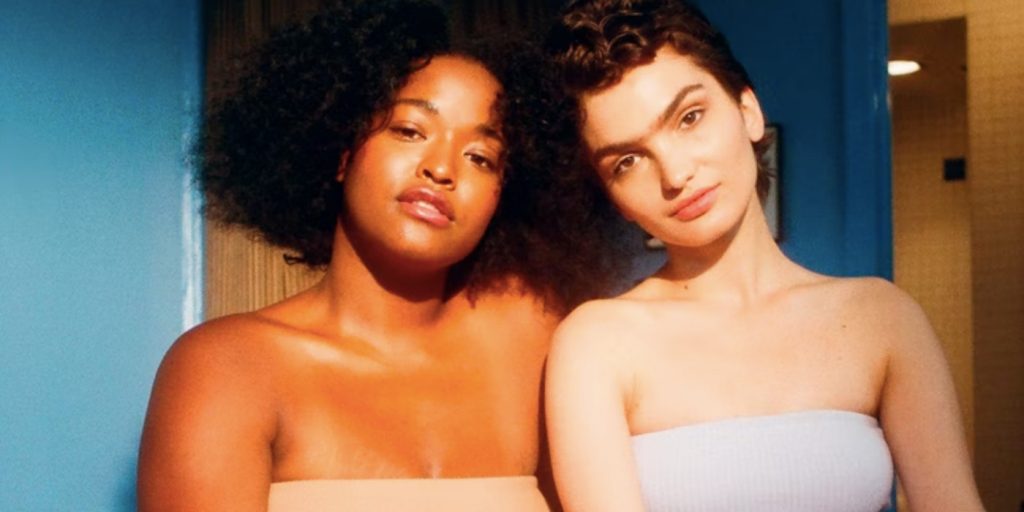
Seeing all the harm social media filters can do to young people, what is it we can do to stop it? In reality, people will continue to use filters as long as it makes them feel good about themselves. However, there is a way to use these filters without causing mental health problems. Educating yourself on body confidence and reminding yourself that filtered results aren’t attainable is the first step to accepting your natural, unfiltered body. This way, social media will go back to being a fun way of communicating with friends, and less of a fantasy world with unrealistic beauty standards.

Want to fast-track your learning? With Shortform, you’ll gain insights you won't find anywhere else .
Here's what you’ll get when you sign up for Shortform :
- Complicated ideas explained in simple and concise ways
- Smart analysis that connects what you’re reading to other key concepts
- Writing with zero fluff because we know how important your time is






